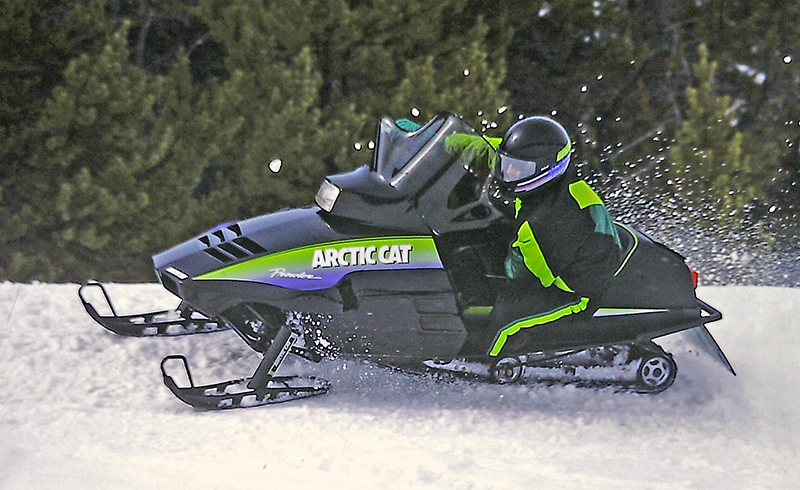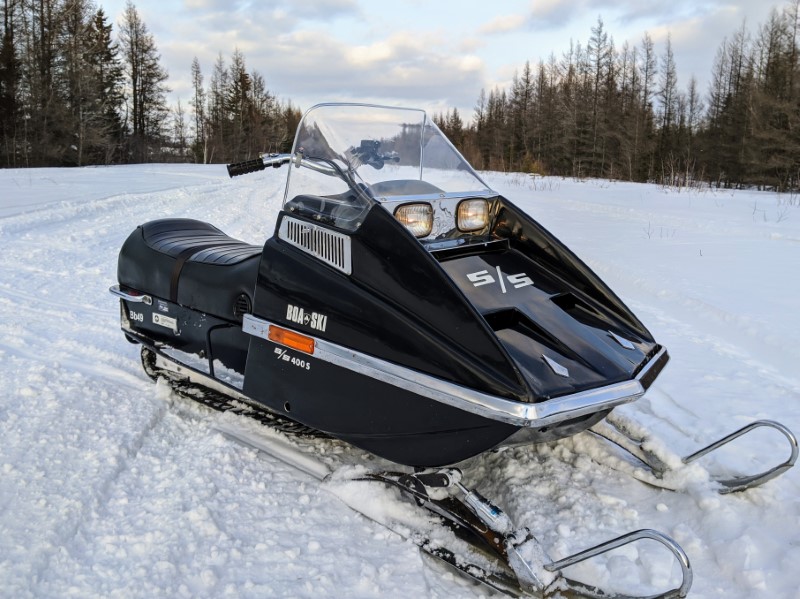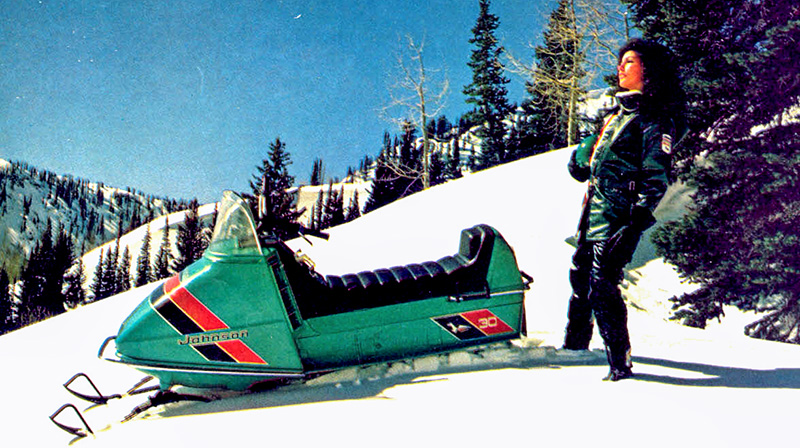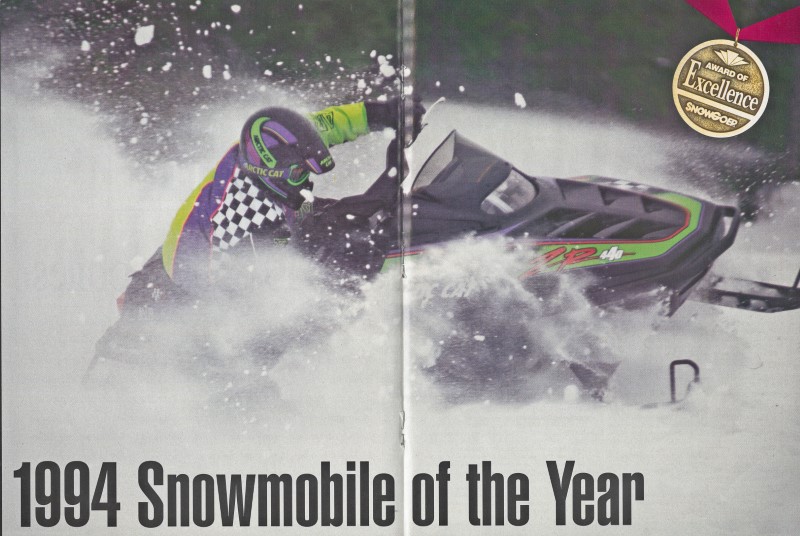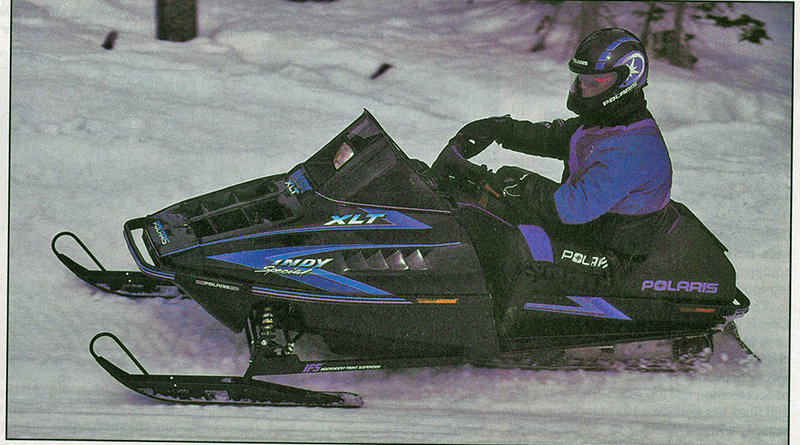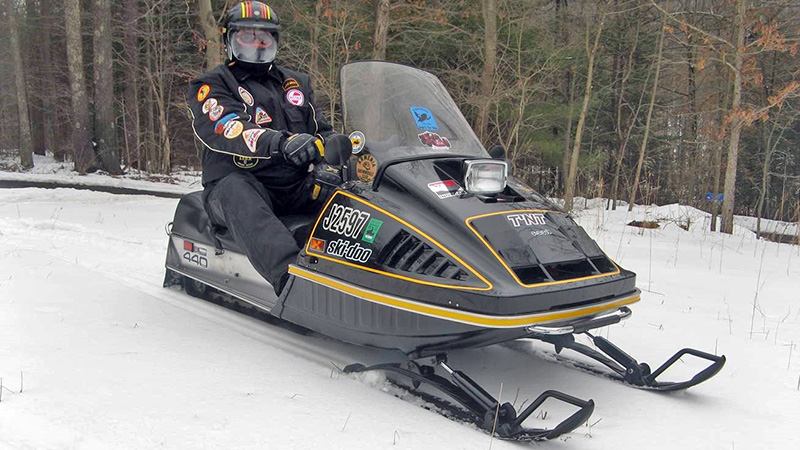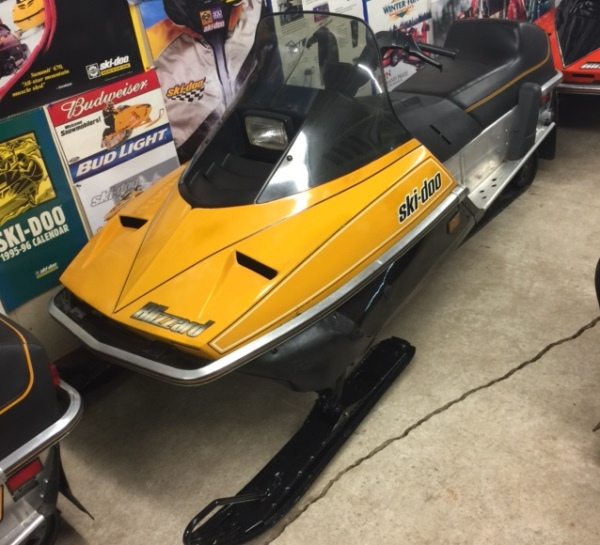
Ski-Doo may be a technological leader in snowmobiling today, but it came to the “modern” front suspension game kicking and screaming in the 1980s, not launching its first coil-spring suspension until the limited edition 1981 Blizzard 5500 MX. This Flashback article, authored by Hall of Fame snowmobile journalist David Wells and first published in the January 2018 issue of Snow Goer, looks back on this historic machine. To regularly read similar Flashback articles, along with informative technical articles, opinionated sled evaluations, aftermarket product tests, easy-to-understand how-to articles, travel features and more, subscribe to Snow Goer magazine.
1982 Ski-Doo Blizzard 5500 MX: The Big Yellow Mogul Masher
Ski-Doo became the fourth brand to offer a coil spring ski suspension sled when it introduced the limited edition 1981 Blizzard 5500 MX in the late summer of 1980.
Basically a Blizzard 5500 with new suspension under each end, it came too late to be included in the 1981 brochure, so it received its own flyer that poked fun at competitive coil-spring front-end machines. Promoted as the “total suspension” sled, the MX retained some older components that included a pre-mix engine with a Bosch breaker point ignition and a 15.5-inch wide track that didn’t provide enough floatation for the big bomber.
The first full production 5500 MX was the much-improved 1982 version with oil injection, Nippon Denso CD ignition, an all-aluminum driven pulley, wider track in a tunnel borrowed from the Everest series, new sway bar and complete suspension re-calibration to put more weight on the track (with less on the skis). But its weight crept up even further, and electric start was not available even as an option.
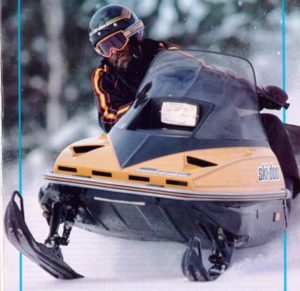
All About The Ride
The Blizzard 5500 MX was entirely focused on ride quality. Bombardier’s new ski suspension used short trailing links with tall coil-over-shock springing at the back end of the links, and a front-mounted sway bar for roll control. The design allowed the skis to move back and up to absorb shocks, with the added benefit of eliminating the bump steer found in the leading-arm designs of competitors.
“The MX’s 4 inches of front travel (actually 4.5 inches), while seemingly not much more than some leaf spring setups, acts like more travel because it arcs as well as absorbs vertically,” Snow Goer editors explained in fall 1981, when they also named the Blizzard 5500 MX a “Best Value” snowmobile.
In back, external coil-over-shock control on the rear arm helped provide unprecedented 10-inch skid frame travel. Combined with the considerable weight of the machine, the suspension made the Blizzard 5500 MX a very smooth-riding sled under most trail conditions.
I sampled a 1981 model soon after its release and was very impressed with how it tamed a rough trail. Snow Goer editors at the time concluded that this first version provided outstanding ride quality, declaring, “We’ve ridden the MX. We believe.” More than 5,000 Snowmobile magazine readers voted it the most significant snowmobile of the 1981 season, and a Snowmobile magazine test crew unanimously agreed that a prototype 1982 Blizzard 5500 MX was “fantastic” after evaluating it on whipped-out, sun-softened trails.
The downside to this suspension with Ski-Doo’s very solid construction was that a tall and very heavy sled with a high center of gravity left some riders feeling unsettled. The power was just adequate, so the 5500 MX wasn’t particularly quick, or fast either. I can say from personal experience that the big axial-fan engine was hard to pull over, especially when cold soaked in sub-zero temperatures.
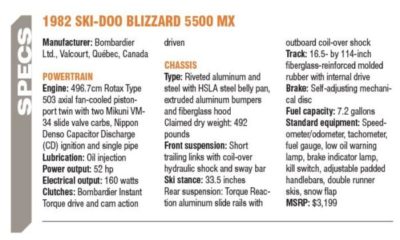 Some riders suggested that the machine should get a liquid-cooled engine, but Bombardier officials with whom I discussed the idea at the time indicated the company felt it would not be a wise move for a variety of reasons, including weight and cost. Although dual ski runners were another plus, the sled had handling that was only OK, but still considerably better than some of its suspension sled competitors.
Some riders suggested that the machine should get a liquid-cooled engine, but Bombardier officials with whom I discussed the idea at the time indicated the company felt it would not be a wise move for a variety of reasons, including weight and cost. Although dual ski runners were another plus, the sled had handling that was only OK, but still considerably better than some of its suspension sled competitors.
Ergonomics were also so-so because there was no way to hang on with your feet, and the reach to the long, flexible brake handle was a challenge for anyone with small hands. The sled was essentially helpless anywhere off a packed trail, which is why Ski-Doo went to the wider track for the full production model. Unfortunately, it didn’t help much.
However, a 1982 model did record more than 22 miles per gallon in a Snow Goer fuel economy test on a 20-mile trail loop at 20 to 25 miles per hour. Even though it was done at a rather low trail speed, this was a very competitive showing for a big, heavy sled with a generally thirsty, large-displacement, twin-carb, fan-cooled engine.
The 1983 version remained virtually unchanged except for a $500 price increase. The final version in 1984 was unchanged yet again, except for a black hood, new graphics and another price bump.
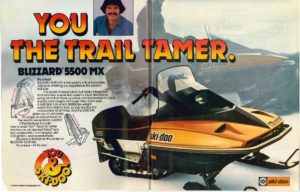
Missed The Mark
In the end, the mogul-taming Blizzard 5500 MX never really caught on. Arriving after the major competition’s suspension sleds, and just as the industry began plummeting into a historic low-point in sales, most riders remaining in the sport opted for the performance and deep snow capabilities that the trail-bound Blizzard MX simply could not provide.
However, the sled could be credited with carrying Bombardier trail sleds into the coil spring era, and that alone makes it a historic model worth remembering.
Editor’s Note: This Flashback article from International Snowmobile Hall of Fame writer David Wells first appeared in Snow Goer magazine. To see more of Wells’ great articles on interesting old sleds, plus in-depth new sled evaluations, aftermarket product tests, informative how-to story, interesting travel features, Snowmobile Science articles and much more, subscribe to Snow Goer magazine.

